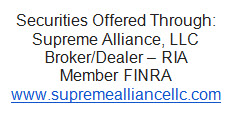412(e)(3) Plans for Small-Business Clients
In a 412(e)(3) plan, each participant is provided with a guaranteed, pre-determined benefit amount that is defined by the plan document and fully insured by the purchase of fixed annuity or life insurance and annuity contracts. Because plan benefits are guaranteed, 412(e)(3) plans are exempt from the funding requirements of IRC Section 41. Any “excess” interest earnings (or dividends, if paid) over and above the life and annuity contract guarantees are used to reduce the next year’s plan contribution.
A fully insured 412(e)(3) DB plan may be a plan solution for the owner of a small business or professional enterprise who desires a large current tax deduction and secure guaranteed retirement income, according to Mary Read, national director of qualified plan marketing at Alliance Benefit Group-Pentegra. Most business owners think their retirement money will come from selling their businesses, but the recession proved that may not always be possible, Read said during a webinar about 412(e)(3) plans. “It’s a very risky plan for retirement,” she cautioned.
The contributions to a 412(e)(3) are, by design, very large in the early years of the plan and may be less appealing as the number of plan participants increases. Introducing life insurance to fund a portion of the benefit will provide increased initial contributions and a current life insurance benefit for each participant, she said.
Read outlined some advantages and disadvantages for business owners to adopt 412(e)(3) fully insured DB plans:
Advantages
- A fully insured 412(e)(3) DB plan can provide substantial retirement benefits without market risk;
- Because benefits are funded based on the contract guarantees, the 412(e)(3) fully insured DB plan can provide a maximum current tax-deductible contribution for the business;
- There is no full-funding limitation under IRC Section 404(a)(1)(A);
- No quarterly contributions are required; and
- There can be no under-funding because contributions are based on the guaranteed provisions of the level premium contracts.
Disadvantages
- It requires large contributions that must be made each year;
- No policy loans are available;
- There is no flexibility in contribution allocations; and
- It must be funded exclusively through annuity and life insurance contracts.
Read said she has seen an increase in 412(e)(3) DB plans in the past several years, a trend that she attributes to uncertainty about the economy and stock market. “This is a place where they can feel comfortable, feel secure,” she added.
Business owners may be concerned about what happens if they have a bad year and cannot keep up with the 412(e)(3) DB plan. Read said she would not recommend that a business owner with highly fluctuating profits enter into one of these plans. However, she said, “This is not pension prison,” meaning there are always ways to get out of the plan.
If the business has a bad year, the plan can be amended to cut back the formula and reduce the company’s contribution obligation. Another option is switching from a fully insured 412(e)(3) DB plan to a traditional DB plan. And if things are really bad, the plan can be terminated.
The best candidates for 412(e)(3) plans are small companies (with less than five employees) that have high, stable profits, and an older owner with younger employees. In addition, the ideal candidate is an owner seeking high tax deductions who has the ability to pay ongoing contributions and is willing to make a five- to 10-year commitment.
This information is not intended to be tax or legal advice, and it may not be relied on for the purpose of avoiding any federal tax penalties. You are encouraged to seek tax or legal advice from an independent professional advisor.


